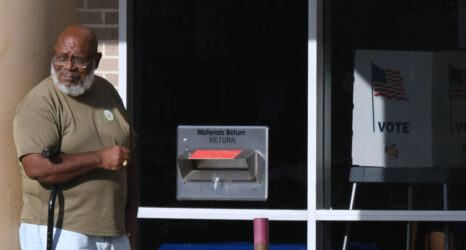When I began to research Harlem Renaissance pianist and singer Gladys Bentley a little over a year ago, I was struck by her similarity to Janelle Monae, who had then just released her second album,“ArchAndroid.” Monae’s gender-queer look — black tuxedo, black-and-white saddle shoe — is strongly reminiscent of Bentley’s trademark black-or-white tuxedo, top hat and cane. And in each case, the spectacle of a Black woman performer disrupting the gender binary has prompted a flurry of speculation about her sexual orientation.
When Bentley started her career as a pianist and blues singer during the mid-1920s, performing at Harlem speakeasies and rent parties, she was open about her identity as an out lesbian. As she gained popularity, she became known as the ultimate bulldagger of the Harlem Renaissance. The iconic image of her in top hat and tails became even more famous than her actual name.
In 1950, however, Bentley published an autobiographical article, “I am Woman Again,” in Ebony magazine, revealing that she was no longer a lesbian and describing her battle with sexuality as a “personal hell.” During this time there was also a clear shift in Bentley’s gender performance: Instead of her usual men’s attire, she performed in a dress with flowers in her hair on the TV variety show You Bet Your Life.
Yet in the annals of gay history, Bentley is celebrated as a lesbian. Her shift to heterosexuality is written off as a fabrication to save her career during the McCarthy era.
Monae has thus far thwarted attempts to get a fix on her sexuality. In a 2010 Rolling Stone interview with Monae, writer Christian Hoard noted that Monae’s “outré look and penchant for pants over skirts has caused some to wonder if she’s gay.” Monae cleverly responded, “The lesbian community has tried to claim me. But I only date androids. Nothing like an android–they don’t cheat on you.”
So are Monae and Bentley classic “closet” cases? It’s true that gay celebrities have hidden their sexual identity for fear of losing fans, often at the advice of Hollywood handlers. But to assume this is always the case is to refuse performers the right to define their own sexuality. For queer Black women, the categories of “lesbian” and “straight,” typically exemplified by white women, can feel especially ill-fitting.
Unlike white lesbians, Black lesbians must struggle to prove their womanhood in a racist and sexist society that already denies the womanhood of straight Black women. Racism has long labeled Black women’s bodies as hypersexual and animalistic in order to establish the “purity” of white womanhood. To counter this, Black Nationalism went to other extreme, attempting to strip Black women of any sexuality through figures such as Queen Nzinga.
Black lesbians fit neither of these models of Black womanhood, so they automatically become identified with manhood or masculinity. The bulldagger or bulldyker is the prevailing image of a Black lesbian, leaving little room for any other queer sexuality. Thus when Bentley and Monae dress in “masculine” clothing, they are labeled as lesbian, despite what they say they are.
I can sympathize with the need for more images of proud and out Black lesbians who identify as butch, femme and everything in between. As Black feminist essayist Cheryl Clarke argues, lesbianism is “an act of resistance” in our “male–supremacist, capitalist, misogynist, racist, homophobic, imperialist culture.” I understand why assigning figures such as Bentley and Monae a lesbian existence heightens pride and furthers visibility for queer communities, especially queer communities of color.
However, as much as we need Black lesbian role models, there has to be space to acknowledge women like Bentley and Monae who decide to change their sexuality or not claim one at all. We have to respect their choices and allow them to shatter labels that are placed on them because of racism, sexism and homophobia.
To claim both Bentley and Monae as part of Queer History, we do not need to prove they were lesbians; instead, we can queer them through their refusal to let heteronormative identities define them. I want to celebrate Bentley’s tenacity in defining herself. In honor of Gladys Bentley, Janelle Monae and Black Herstory, I grant Black women our rightful power to invent and reinvent ourselves.
Read More:





